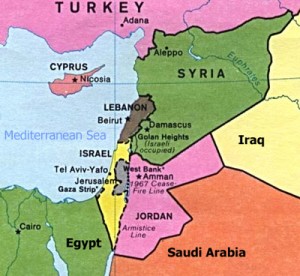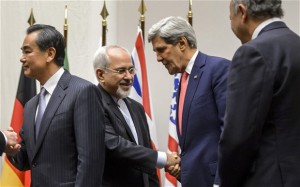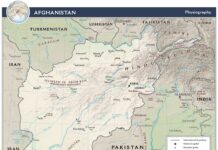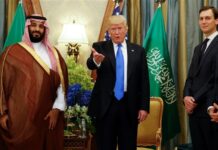 By Naade Ali
By Naade Ali
South Asia and Middle East Fellow
Context
In the post October 7, 2023, Hamas led attack on Israel, the geopolitics of Middle East is fast evolving. This has been accompanied by the loss of Hezbollah leadership in Lebanon and the fall of Assad regime in Syria in December 2024. The inauguration of President Trump on January 20, 2025, has presented unique threats and opportunities regarding the future of two-state solution and Iran.
The likelihood of a broader conflict between Iran and Israel hangs in balance as President Trump and Israeli Prime Minister Benjamin Netanyahu have forged a strong strategic alignment. Meeting with Trump on Feb 4, Netanyahu tried to ensure that U.S. policy remained closely aligned with Israel’s objective of weakening Iran’s defense capabilities, particularly preventing it from ever acquiring nuclear missile power. On the other hand, Iran had hoped that Trump would adopt a pragmatic approach and revive nuclear talks leading to easing of economic pressure. To Iran’s disappointment, Trump pursued the reinstatement of “maximum pressure” policy on Tehran.
However, difference of opinion exists where Netanyahu, sensing an opportunity, is lobbying for a military solution towards Iran. Conversely, Trump is vying for a negotiated settlement while keeping hopes alive for a two-state solution. This he is doing by raising the stakes for the Gulf and Arab nations, who met in Riyadh on February 21 to discuss the future of Gaza. A follow-up emergency meeting of the Arab League is planned on March 4th in Egypt, to present a counter plan to what Trump has proposed.
Trump’s Carrot-and-Stick Approach
The “maximum pressure” doctrine portrays Iran as a destabilizing force and a significant threat to U.S. national interests, centered on three key objectives:
First, it seeks to cripple Iran’s nuclear program through harsh diplomatic and economic sanctions. Second, it aims to weaken Iran’s regional influence by dismantling its network of “proxies” and axis of resistance. This objective has taken on additional significance with the on-going Gaza crisis, elimination of Hezbollah leadership, and the fall Assad regime in Syria. Third, it strives to isolate Iran on the global stage, a move Iran’s president condemned as an attempt to “bring Iran to its knees.”
Justifying his approach, Trump claimed the timing was ideal, stating, “Iran, terrified after losing almost all its air defenses, would love to make a deal with the United States.” Confident that relentless pressure would force Iran into submission, he remains committed to a strategy of economic and diplomatic coercion.
Despite his tough rhetoric, Trump ruled out military intervention, dismissing reports of a potential U.S.-Israel strike as “greatly exaggerated.” While acknowledging Iran’s military ambitions—describing it as “very militant”—he firmly rejected the idea of bombing Iran, stating, “I would much prefer a Verified Nuclear Peace Agreement, which will let Iran peacefully grow and prosper.”
Meanwhile, key Republican leaders, including U.S. Rep. Mike Turner, have stated that Trump’s strategy is designed to “secure a long-term solution that guarantees Israel’s security by preventing Iran and its proxies from ever threatening its sovereignty.” Likewise, Rep. Joe Wilson has praised the maximum pressure campaign, asserting that it would ultimately weaken Iran and dismantle its network of terror proxies.
Israeli Plans
 While U.S. President Donald Trump has shown reluctance to engage in direct military action against Iran, Israeli Prime Minister Benjamin Netanyahu has taken a more assertive approach. According to multiple credible reports, with Iran’s air defense systems significantly weakened and its regional proxies under strain, Netanyahu sees a strategic window to target Iran’s nuclear facilities—whether or not the U.S. supports the move. The American intelligence assessments indicate that Israel is actively considering large-scale strikes on Iranian nuclear sites in the latter half of the year, with Israeli officials expected to urge the Trump administration and key Republican leaders to endorse their plans.
While U.S. President Donald Trump has shown reluctance to engage in direct military action against Iran, Israeli Prime Minister Benjamin Netanyahu has taken a more assertive approach. According to multiple credible reports, with Iran’s air defense systems significantly weakened and its regional proxies under strain, Netanyahu sees a strategic window to target Iran’s nuclear facilities—whether or not the U.S. supports the move. The American intelligence assessments indicate that Israel is actively considering large-scale strikes on Iranian nuclear sites in the latter half of the year, with Israeli officials expected to urge the Trump administration and key Republican leaders to endorse their plans.
The recent approval by the U.S. State Department of a $7.4 billion arms sale to Israel—including thousands of bombs and missiles set for delivery this year—suggests a broader effort to reinforce Israel’s military capabilities against potential regional threats. Israel already possesses U.S.-made bunker-busting munitions capable of striking Iran’s underground nuclear sites, particularly those concealed within the mountainous terrain of Fordow near Qom. This growing military buildup highlights Israel’s preparedness to neutralize Iran’s security infrastructure if necessary.
Israeli officials have repeatedly affirmed that the Israel Defense Forces (IDF) are fully prepared to launch strikes on Iranian nuclear sites. Defense Minister Israel Katz has hinted at the possibility of an attack in the coming months. In a letter to incoming U.S. Secretary of Defense Pete Hegseth, Katz wrote:
“The months ahead present both challenges that demand military readiness and opportunities to advance our strategic objectives.” He has previously stated that “Iran’s nuclear facilities are more vulnerable than ever,” suggesting that this moment may offer the best chance to neutralize what Israel perceives as an existential threat.
In essence, the emphasis of the approach is twofold: Israel exerting military pressure while the U.S. working on the economic squeeze. The outcome of the two would either result in a regime change led by the Iranian people – or push the Iranian government to strike a deal with Trump. According to some media reports, if Tehran does not reach an agreement with the U.S. by October, Israel is likely to initiate a military action.
How is Iran Preparing?
President Masoud Pezeshkian has warned that while Israel or its allies “may succeed in damaging Iran’s nuclear infrastructure, they will not be able to strip the country of its ability to rebuild.” His statement came after Supreme Leader Ali Khamenei categorically rejected negotiations with the Trump administration, asserting that past talks had neither been rational nor honorable. “Negotiations with America do not solve any of our problems,” Khamenei declared.
 President Pezeshkian has accused Trump of engaging in deceptive diplomacy while simultaneously working to undermine his government. While reaffirming that Iran does not seek war, he warned that “Iran will never bow to foreign pressure.” Foreign Minister Abbas Araghchi echoed this sentiment, stating that negotiating with Trump would amount to surrender. He further cautioned that any military action by Israel or the U.S. against Iran’s nuclear facilities would trigger an “all-out war,” calling it one of the greatest strategic miscalculations Washington could make.
President Pezeshkian has accused Trump of engaging in deceptive diplomacy while simultaneously working to undermine his government. While reaffirming that Iran does not seek war, he warned that “Iran will never bow to foreign pressure.” Foreign Minister Abbas Araghchi echoed this sentiment, stating that negotiating with Trump would amount to surrender. He further cautioned that any military action by Israel or the U.S. against Iran’s nuclear facilities would trigger an “all-out war,” calling it one of the greatest strategic miscalculations Washington could make.
Last year, Iran announced plans to triple its military budget. Western think tanks estimate that Iran was the fourth-largest military spender in the Middle East in 2023, with a defense budget of approximately $10.3 billion.
On the other hand, Iran has deepened its military and economic cooperation with China and Russia. Despite crippling U.S. sanctions, Iran has found alternative economic mechanisms to sustain itself and remains a key player in the China-led Shanghai Cooperation Organization (SCO) and BRICS.
Some reports suggest that Iran is ramping up its missile program, with a vessel carrying 1,000 tons of Chinese-made chemicals—potentially crucial for missile fuel—recently arriving at an Iranian port. Furthermore, Iranian military has launched its first drone carrier ship, capable of launching stealth attacks, and has acquired Russian Sukhoi-35 fighter jets to modernize its aging air force. A strategic cooperation agreement signed with Moscow in January has further reinforced Tehran’s defense ties. Despite Israel’s escalating rhetoric, Iranian military officials insist that the country’s air defense remains intact and more resilient than ever.
Conclusion
For years, Israel and Iran have been engaged in a shadow conflict, carefully calibrating their actions to avoid all-out war. Recently, Iran has adopted a strategic paradigm described as ‘strategic patience’—a calculated approach that has shielded it from large-scale destruction while reinforcing its self-sufficiency. Iranian Vice President Javad Zarif has dismissed speculation that Iran might resort to nuclear weapons as a last-ditch effort for survival or deterrence. Instead, he emphasized that the nation’s self-reliant defense strategy ensures resilience against external pressure.
However, The New York Times has reported that Iran may be discreetly exploring the possibility of developing nuclear weapons should its leadership decide to take that path. According to the report, since resuming fuel production, Iran has accumulated enough enriched uranium to construct at least four nuclear bombs. While Iran has the technical expertise to develop a basic nuclear device relatively quickly, it currently lacks the capability to integrate such a weapon into a ballistic missile system. Nonetheless, a successful nuclear test could allow Iran to declare itself a nuclear-armed state, significantly altering the strategic balance in the region.
While Iran’s conventional military strength does not match that of Israel or the U.S., it retains the capability to inflict serious damage on both adversaries. As the main supporter of Hamas and Hezbollah, the question of Iran is directly linked to the present Gaza crisis and what comes next. While many Gulf and Arab nations have privately loathed Hamas for the Oct 7, 2023, attack on Israel and for disrupting the progress achieved through Abraham Accords, the Trump plan to take over Gaza, has forced them to back up their sentiments with action. It also represents the final step in the full culmination of the Outside-In approach to the Israeli-Palestinian conflict.
Related Articles:
Assad’s Demise And The Shifting Balance Of Power In Middle East – Dec 26, 2024
The Escalating Middle East Crisis And President Elect Trump – Dec 5, 2024
Iran’s Potential Retaliation For Haniyeh’s Killing And Wider Consequences – Aug 30, 2024
The Iran-Pakistan Gas Pipeline Project: Economic and Geopolitical Realities – Sep 27, 2024



